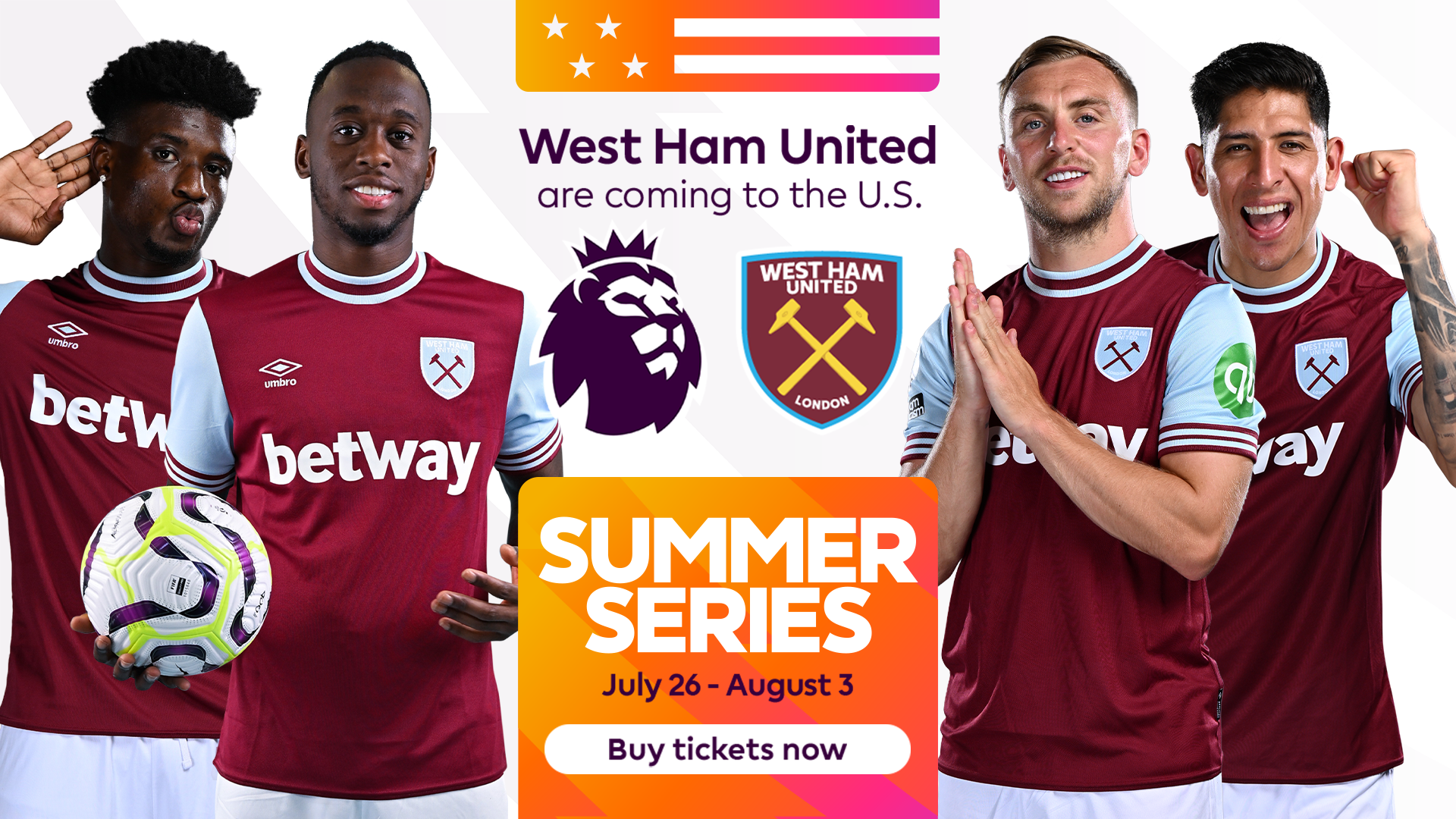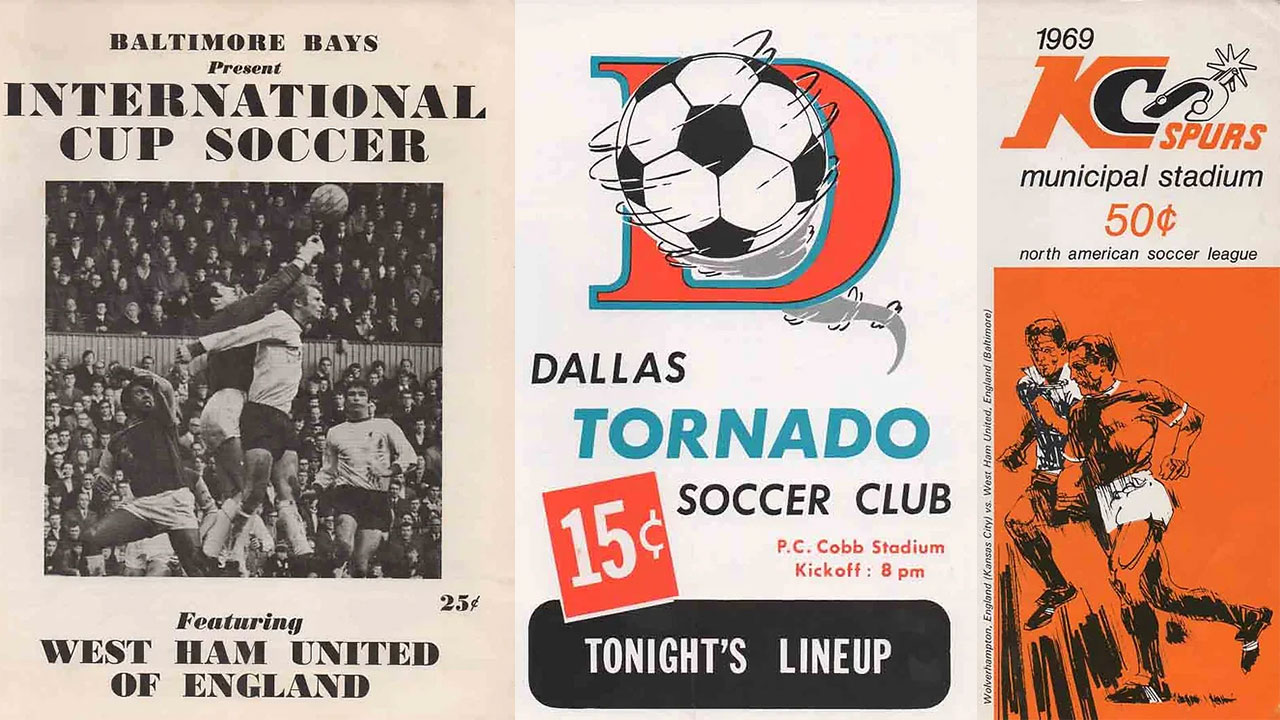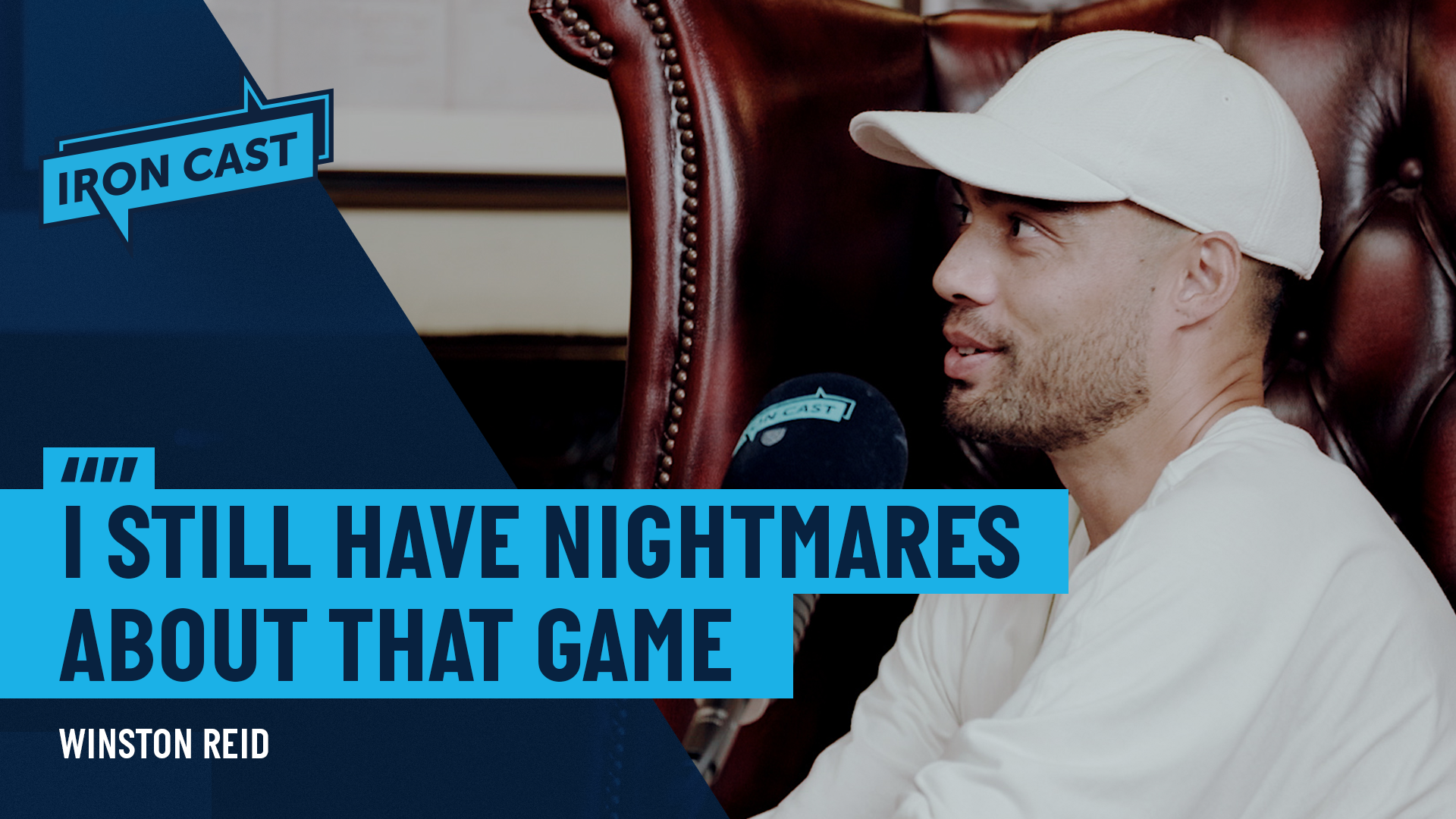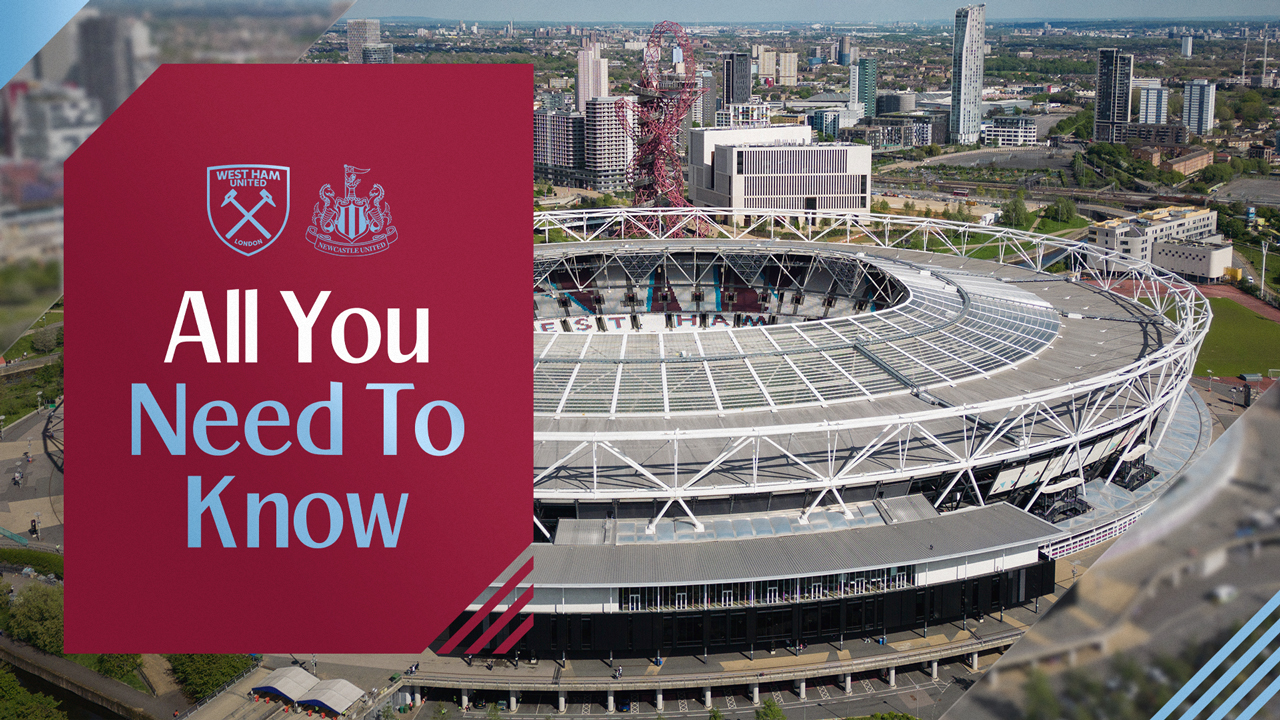West Ham United will travel to the United States for the 2025 Premier League Summer Series in July-August. As we look forward to crossing the Atlantic Ocean again, we look back on the Hammers' previous visits to America...
West Ham United completed the 1968/69 season by drawing 1-1 with Manchester City at Maine Road on Wednesday 30 April 1969 - a result that saw Ron Greenwood’s side finish eighth in the First Division table.
The FIFA World Cup-winning duo of Geoff Hurst and Martin Peters combined to score 44 of the Hammers’ 66 league goals, with 20-year-old Trevor Brooking chipping in with seven, while captain Bobby Moore missed just one of the Irons’ 42 league matches.
Three days later, Moore led England out and Hurst and Peters were on target again as the Three Lions defeated Northern Ireland 3-1 in Belfast in the Home Championship.
By the time England hosted Wales on 7 May, however, the goalscorers had caught a flight to the United States, where they joined their West Ham teammates for a unique post-season tournament.
As part of a project to grow the game in the US, North American Soccer League (NASL) executive director and former Leyton Orient, West Ham and Aston Villa forward Phil Woosnam had invited five British clubs to take part in the NASL’s first International Cup.
For the month of May, West Ham would ‘represent’ NASL club Baltimore Bays, while Aston Villa would become the Atlanta Chiefs, Wolverhampton Wanderers would morph into Kansas City Spurs, while Scottish sides Dundee United and Kilmarnock would become Dallas Tornado and St Louis Stars respectively.
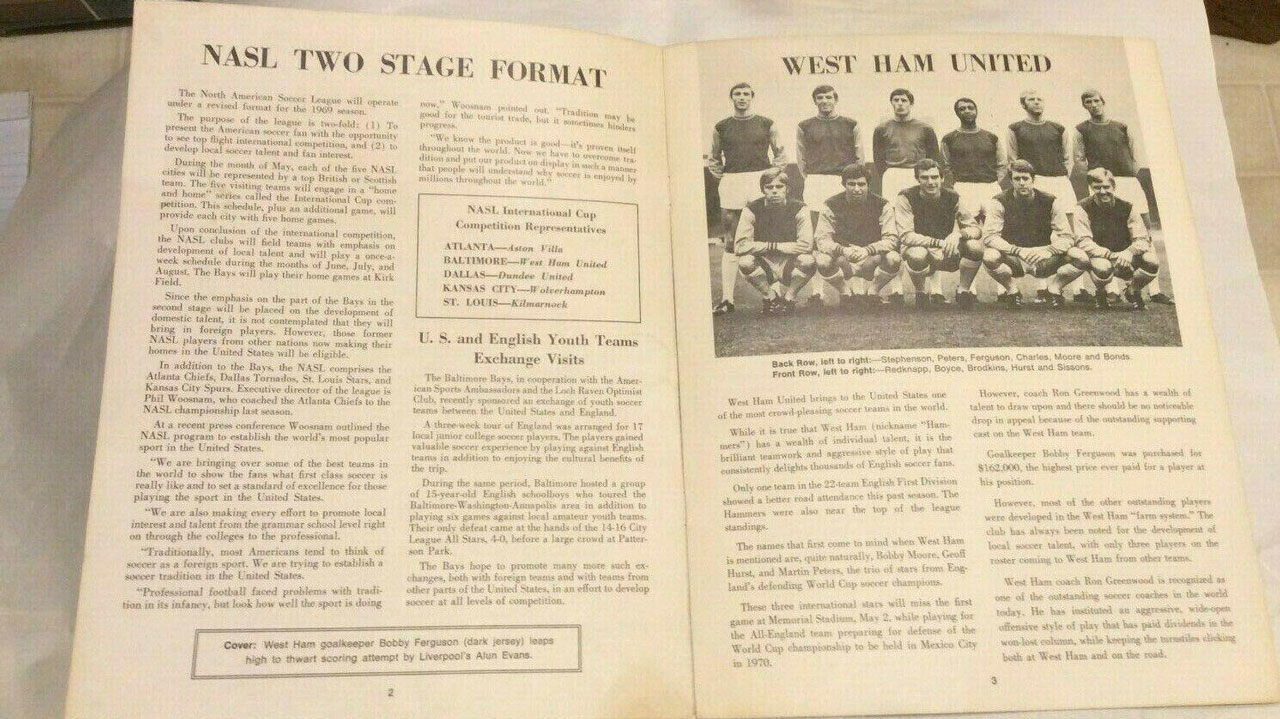
The five would play each other twice home and away in a double round-robin tournament, with the imported Bays playing their home matches at Baltimore Memorial Stadium, which was home to the NFL’s Baltimore Colts and Major League Baseball’s Baltimore Orioles.
Following the International Cup, the Bays would return to domestic NASL action over the summer with a squad made up of American and US-based players, with the hope that the presence of West Ham and their four fellow British clubs would increase interest in the league.
“We are bringing over some of the best teams in the world to show the fans what first class soccer is really like and to set a standard of excellence for those playing the sport in the United States,” Woosnam, who had played for and coached the NASL’s Atlanta Chiefs, explained in a pre-tournament press conference. “We are also making every effort to promote local interest and talent from grammar school level right on through the colleges to the professional.
“Traditionally, most Americans tend to think of soccer as a foreign sport. We are trying to establish a soccer tradition in the United States. Professional football faces problems with tradition in its infancy, but look how well the sport is doing now. Tradition may be good for the tourist trade, but it sometimes hinders progress.
“We know the product is good - it’s proven itself throughout the world. Now we have to overcome tradition and put our product on display in such a way that people will understand why soccer is enjoyed by millions throughout the world.”
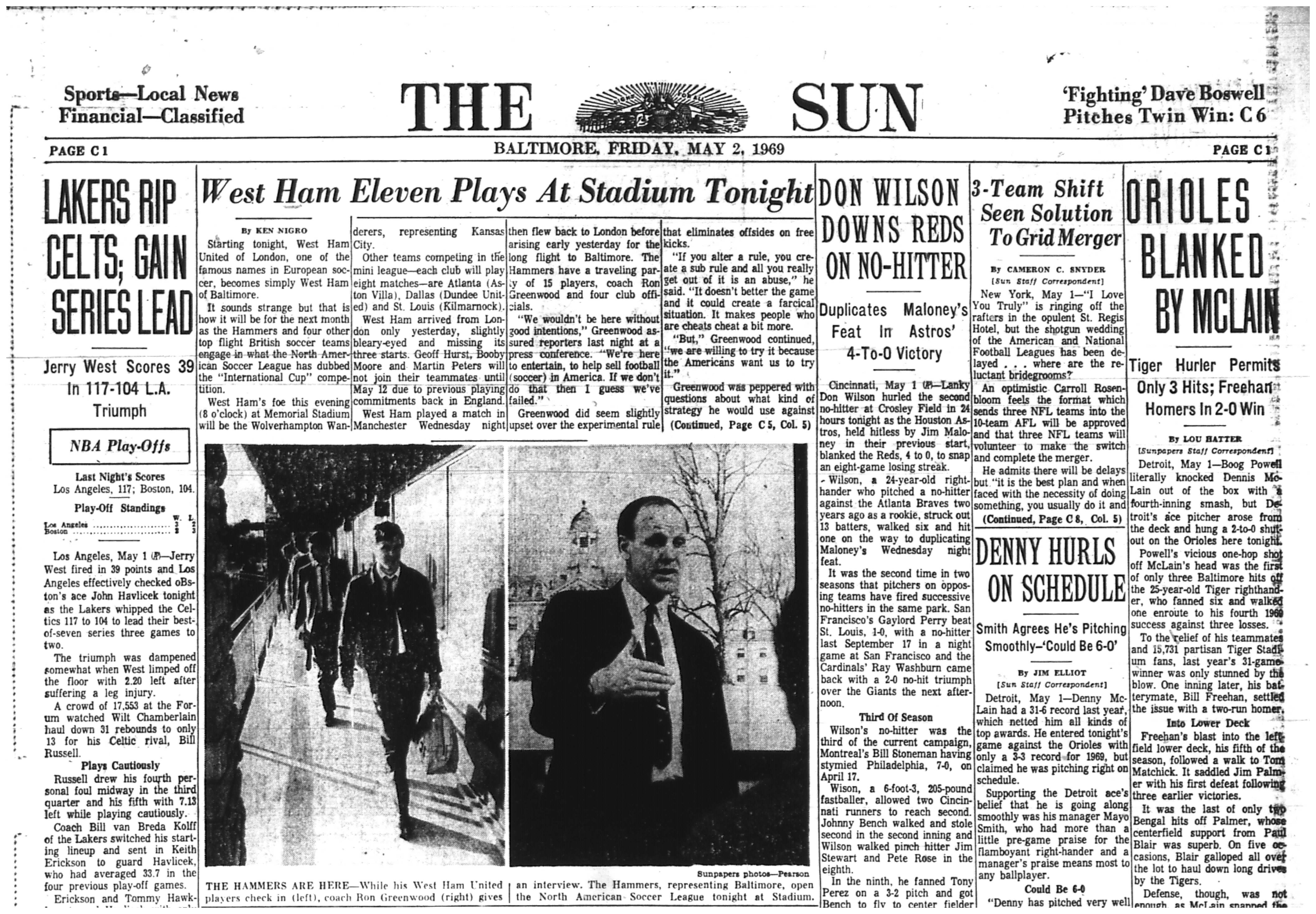
Fast forward over 50 years and Woosnam’s words ring true. The Welshman’s vision and work saw the NASL expand, establishing teams in major markets like New York, Los Angeles and Seattle and attracting the likes of Pelé, Franz Beckenbauer and former teammates Hurst and Moore to play in the league.
He later helped bring the FIFA World Cup to the US in 1994. Two years later, Major League Soccer was launched and it is now the eighth best-supported league in the world, with attendances at its 29 clubs averaging over 23,000 supporters.
Back to May 1969, however, and the game was still in its relative infancy in the United States, and struggling to attract interest and crowds, with American football, baseball, basketball and ice hockey all far more popular.
The Bays kicked-off their NASL International Cup by hosting Kansas City Spurs (Wolverhampton Wanderers) at Memorial Stadium on Friday 2 May 1969. Inside-forward Peter Bennett scored two goals and Clyde Best added a third in a 3-2 victory in front of 5,128 fans.
Five days later, the two teams met again at Kansas City Municipal Stadium in Missouri, where the Spurs gained their revenge with a 4-2 win. The Bays’ goals came from Brooking and an own-goal by Spurs centre-back John McAlle.
On Friday 9 May, the Bays were in Seattle, Washington to face St Louis Stars (Kilmarnock). Ronnie Boyce found the net for Baltimore, who were the designated away team, but the Stars won 2-1.
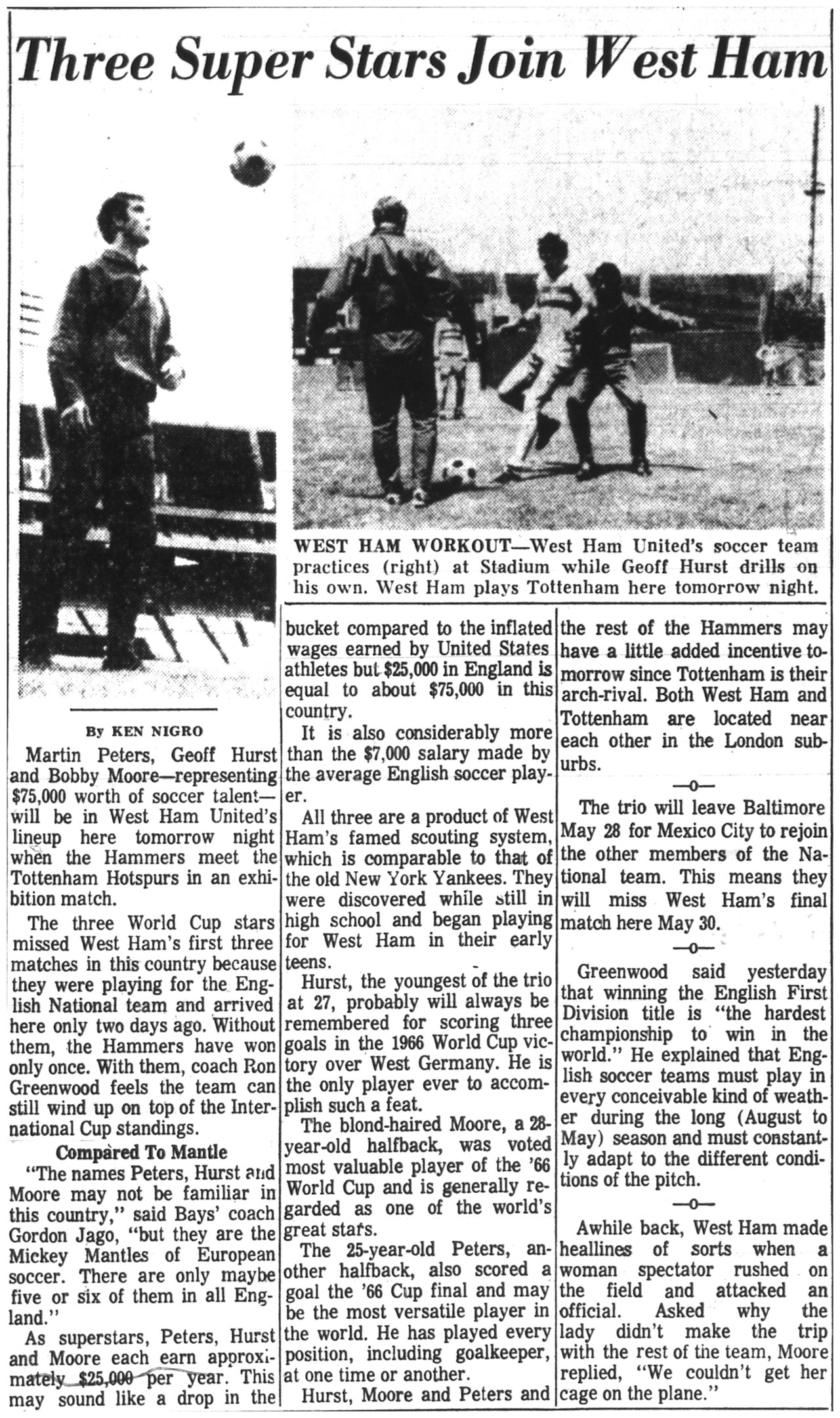
The arrival of Hurst, Peters and Moore transformed the Bays’ fortunes, as they won four and drew one of their remaining five matches.
Match four saw Brooking hit a hat-trick and the three World Cup winners all score in a 6-1 demolition of Dallas Tornado (Dundee United) at Memorial Stadium on Saturday 17 May, and Hurst and Peter Hartley then netted in a 2-2 draw with Atlanta Chiefs (Aston Villa) at Fulton County Stadium in Georgia two days later.
From there, the Bays travelled to Texas, where Hurst scored two and Brooking the other in a 3-2 win over Dallas Tornado on Wednesday 21 May, before Peters got both in a 2-0 win over Atlanta Chiefs at Memorial Stadium six days later.
Baltimore’s International Cup campaign came to a winning conclusion on Friday 30 May 1969 at Memorial Stadium, where Boyce, Bennett, Hartley and Scotsman Jimmy Lindsay scored in a 4-1 win over St Louis Stars.
The scoring system for the tournament awarded six points for a win, three for a ‘tie’ and a point for each goal scored up to three goals in each game.
Baltimore Bays finished second on 52 points, five behind Kansas City Spurs, 21 ahead of Dallas Tornado, 24 ahead of Atlanta Chiefs and double the 26 scored by St Louis Stars.
Despite the presence of World Cup winners and the Bays’ relative success on the pitch, Baltimore’s domestic team could not replicate it, winning just two of 16 matches and playing in front of just 1,238 fans on average in the second half of the season.
With losses of over $1million, the team was dissolved in September 1969 after just three seasons in operation and a short, strange period in football - or should that be soccer - history came to an end.
